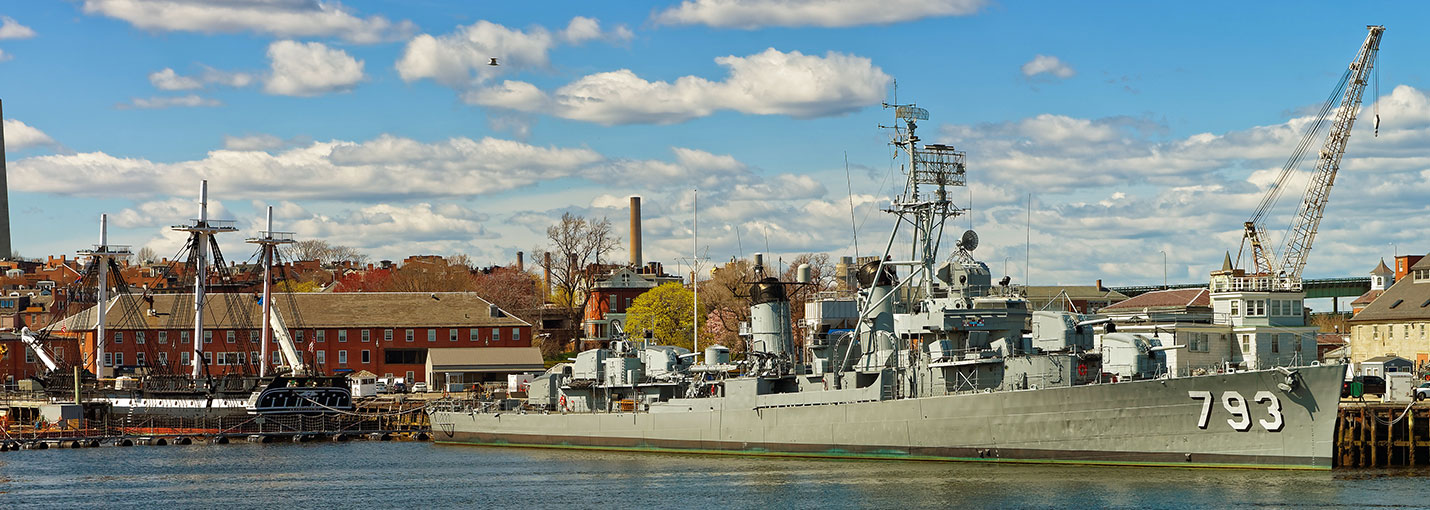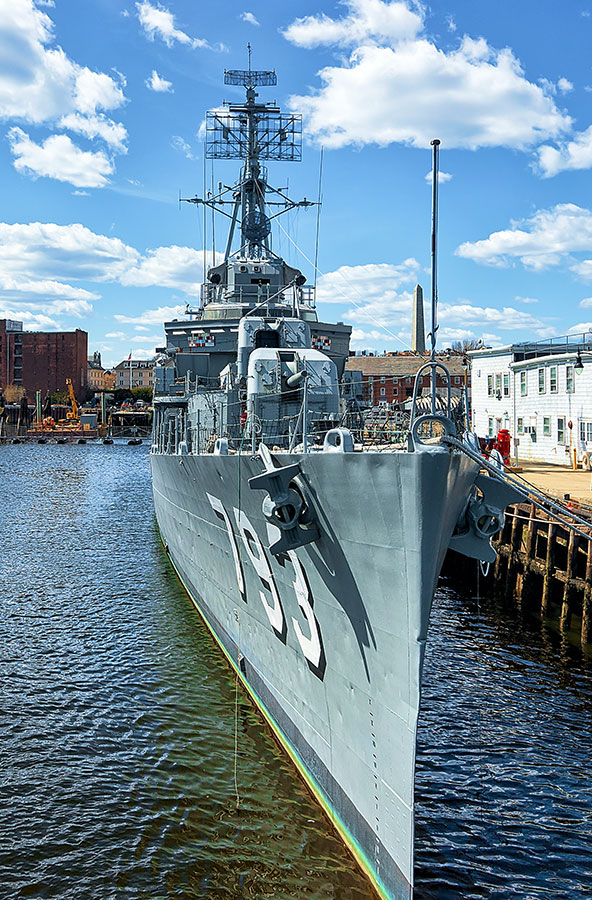Sources of Asbestos Exposure / Asbestos in the U.S. Navy / List of Ship Classes / Asbestos on Destroyer Escorts
The Importance of US Naval Support Ships
Support ships, like destroyer tenders and escorts, are every bit as vital as front-line combat ships. The most powerful combat ship in the fleet might as well be a rowboat without fuel or ammunition, or if it sustains battle damage. Returning to port for resupply and repair is not an option. That’s especially true in broad campaigns with huge operational theaters, like World War II.
Asbestos Exposure Aboard the USS Sierra
The USS Sierra was one of the most notable destroyer escorts of this period. Like its sister ships, although the Sierra played a vital role in the war effort, very few people noticed. Her keel was laid in December 1941, just a few weeks after Pearl Harbor. The Sierra saw action beginning in the middle of 1943, supporting the invasions of Iwo Jima and the Philippines. During this action, her crew performed major repairs on several large combat vessels, so those ships could stay in the fight.
During the early Cold War period, the Sierra served mostly in Europe. She was the flagship for Destroyer Flotilla 4 during the 1960s. In the 1970s, she served stateside, mostly on the East Coast. Officials awarded the Sierra’s crew the Humanitarian Medal for their efforts to help victims of Hurricane Frederic in Alabama. At the time of her decommissioning in 1993, the Sierra was the Navy’s oldest active warship.


Asbestos Uses on US Naval Destroyer Escorts
Destroyer escorts, like the Sierra, were among the first ships to use diesel-electric engines instead of steam-driven turbines. This improvement significantly increased the risk of fire. So, designers put more asbestos in the Sierra and similar ships.
The asbestos in the engine room and other areas of the ship is probably one of the reasons the Sierra, like many other older naval vessels that still had some usable life, was decommissioned shortly after the EPA banned asbestos in 1987.
Shipbuilders also used this fibrous mineral for insulation and noise reduction. Chrysotile asbestos, or white asbestos, is waterproof, which is a major plus on a naval vessel. Furthermore, there is no asbestos smell, which is another plus on a cramped oceangoing ship. This form of asbestos is also subject to lots of wear and tear, which means stray fibers often enter the air.
US Naval Veterans At Risk for Asbestos Exposure and Health Problems
Sailors on destroyer escorts face double dangers. In addition to the asbestos on their own vessels, they work unprotected among asbestos on other ships.
Engineer’s Mates and Electrician’s Mates worked around asbestos pretty much every day. As most sailors would confirm, the mates did most of the work, while the chiefs mostly supervised.
We mentioned the heavy-duty engines, and the risk of fire, on destroyer tenders. Additionally, asbestos doesn’t conduct electricity. So, to shipbuilders, covering wiring with inexpensive chrysotile asbestos was the most cost-effective solution. It was also the most dangerous solution.
US Naval Vessel Repair Personnel Were Also Exposed to Asbestos and Develop Asbestos-Related Illnesses
Repair workers who boarded other ships walked into the jaws of the lion, at least for asbestos exposure purposes. Asbestos fibers floated everywhere in battle-damaged combat ships, especially in enclosed areas. These fibers were also on the ground, meaning that bending, stooping, and kneeling workers were exposed to them.
Asbestosis and other asbestos-related illnesses often mean hundreds of thousands of dollars in medical bills. Our team works hard to make sure these victims don’t have to pay these costs out of their own pockets.


AsbestosClaims.LawAsbestosClaims.law is your comprehensive resource for all things asbestos, including info on health and compensation for Air Force Veterans and other former Service Members. We hope this is helpful and are grateful to all who have given of themselves to defend us all. If you have any additional questions or concerns related to asbestos, check out our website and YouTube page for videos, infographics and answers to your questions about asbestos, including health and safety, asbestos testing, removing asbestos from your home and building, and legal information about compensation for asbestos injuries. And if you believe that you were exposed to asbestos, or have been diagnosed with an asbestos illness, you could be entitled to significant compensation—money you could use to cover the costs of asbestos removal services, pay for medical treatment, and preemptively protect your physical well-being. All without filing a lawsuit. If you’d like help with filing a claim, please get in touch by email at [email protected], or call or text us at (833) 4-ASBESTOS (427-2378) or (206) 455-9190. We’ll listen to your story and explain your options. And we never charge for anything unless you receive money in your pocket. |



